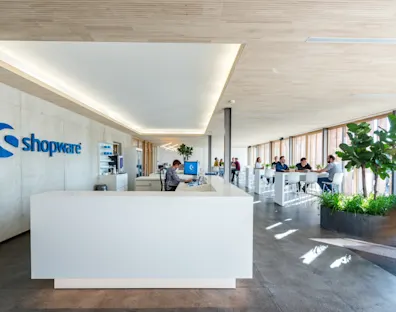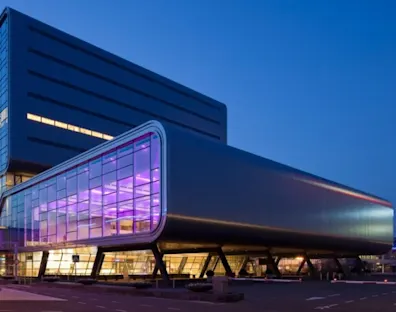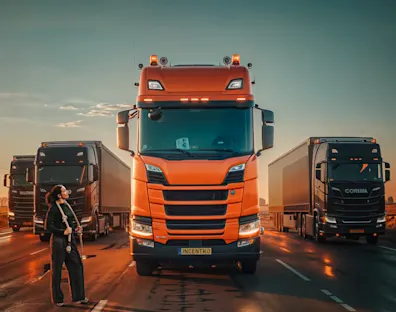Homefashion Group
Homefashion Group: one e-commerce platform for multiple brands
Industry
E-commerce
Technology
Contentful


In 2019, the Homefashion Group, the parent company of Leen Bakker and Kwantum, knocked on our door. The challenge? Achieving online growth with a flexible and scalable platform that considers their vision. And that's something we love to help with!
E-COMMERCE PLATFORM HOMEFASHION GROUP · E-COMMERCE PLATFORM HOMEFASHION GROUP · E-COMMERCE PLATFORM HOMEFASHION GROUP · E-COMMERCE PLATFORM HOMEFASHION GROUP · E-COMMERCE PLATFORM HOMEFASHION GROUP · E-COMMERCE PLATFORM HOMEFASHION GROUP · E-COMMERCE PLATFORM HOMEFASHION GROUP · E-COMMERCE PLATFORM HOMEFASHION GROUP · E-COMMERCE PLATFORM HOMEFASHION GROUP · E-COMMERCE PLATFORM HOMEFASHION GROUP ·
About Homefashion Group
Homefashion Group's mission is to help everyone enjoy a comfortable, stylish home by offering an extensive range of high-quality products and services at affordable prices. They are always close to the customer, with 272 physical stores, 4 webshops, and 4,200 employees.
Challenge with an outdated e-commerce platform
It was Homefashion Group's desire to achieve synergy between the two brands - Leen Bakker and Kwantum - with one scalable and flexible e-commerce platform in a white-label setup (more on this later!).Two of the largest omnichannel home furnishing platforms in the Benelux, Kwantum, and Leen Bakker, deserve an excellent e-commerce platform. But the old e-commerce monolith presented considerable challenges, such as maintenance, updates & upgrades, optimization, lack of flexibility, and scalability. To address these challenges, we developed a new, user-friendly platform.
Headless front-end architecture provides flexibility by decoupling the front-end applications from the underlying back-end structure, enabling us to iterate more easily and quickly in development.
Marily Ober Domein, Manager Commercie at Homefashion Group
A flexible and scalable digital experience platform (DXP)
To solve the challenges of the old platform for good and move to a modern DXP, it was necessary to partially replatform. Therefore, we made a step-by-step transition from on-premise to Google Cloud. In other words, no physical servers, but everything is in the cloud. And in the cloud, the principle "The sky is the limit" applies because flexibility and scalability are infinite. In addition, we set up the headless front end to communicate with different services, Contentful being one of the two primary services. Together with HFG's content team, we thought about a suitable content model that focuses on their needs. We created a scalable platform where both brands have their own Contentful environment, and you can make changes centrally to both Contentful installations. The best of both worlds, so ourselves. The combination of cloud and a headless front-end makes you fast, flexible, and scalable. This allows you to add new applications to your platform flawlessly.

A platform for multiple brands
So during the replatforming process, we worked on a platform that scales very well. Both in width (hello new brands and applications) and in-depth (welcome new features). This allows HFG to reuse all kinds of components. After all, why reinvent the wheel? Exactly. In addition, we focused on stability and reliability. Almost all code is tested automatically, and because we used Typescript, we know precisely how all data moves through the application and what to expect. There are also fixed agreements about the form of the code we write, and all this ensures that:
- We can detect errors promptly. A great example of this is an error-free release at the Kwantum webshop!
- Working within a large team remains manageable in the long run because we all work according to the same principles.
With the new architecture, HFG is optimally prepared for future plans and can efficiently serve multiple brands with a single platform. And the fast way of working also allows you to respond to the rapidly changing market; think of:
- Personalization
- Improved search functionality
- Faster loading time
- Mobile optimization
New features, both internal and external
Whitelabel setup
Whitelabel setup means you can easily add new components (or brands) to the platform without significant changes. This way, you can serve different brands in one environment, each with its own branding, style, and functionality. Ideal for a parent company like HFG.
Additional functionalities for an optimal UX
We also added configurators (read: unique features), such as a new function to order custom curtains and virtually choose the right paint color. Talk about a pleasing UX!
The components for a successful e-commerce platform
You see, a project of this magnitude requires a comprehensive approach. We worked on design systems, website performance, configurators, a headless front-end, and a headless CMS. Read more about these components below.
Headless CMS
The headless CMS allows you to manage content and its presentation separately. This gives HGF much flexibility and control over content distribution to different touchpoints and sales channels. This will enable them to offer a personalized shopping experience to their customers.

Design Systems
With the creation of a Design System, digital products are now developed consistently and efficiently. Consistent is essential for recognition. And efficiency is ideal for developers, as they work with reusable components.
Website performance
With Speedcurve Monitoring dashboards, we constantly monitor platform performance. Analyzing various metrics, you can trace significant differences to a specific codebase release. In plain language, the insights from the dashboards help us improve the code, making the platform work more efficiently and giving users a better experience.
Configurators
Homefashion Group's configurators allow customers to quickly assemble customized products, such as window coverings, in their favorite color, material, and size. This is how HFG caters to customers' needs.
Resultaat
After eleven months of testing, more testing, and (you guessed it) more testing, it was time for the launch! The Leen Bakker webshop went live in November, and Kwantum followed shortly after. The result? A flexible and scalable DXP with which the Homefashion Group has realized a future-proof platform that can quickly move with changes in the market and consumer behavior.

Do you want to know more?
Jeroen Pluim
Director Digital



